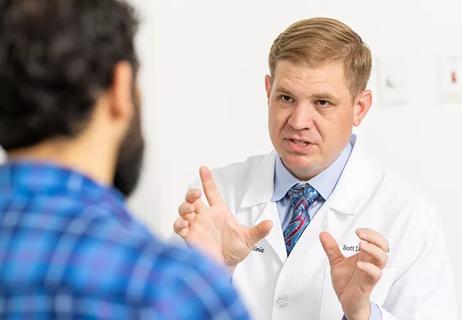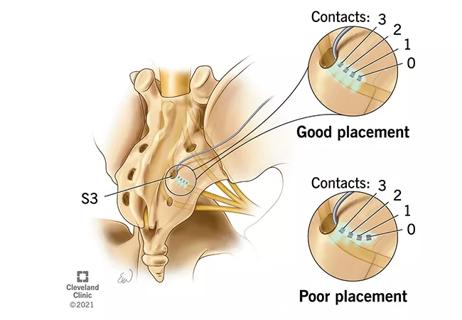Can help expedite diagnosis of fertility issues

Varicocele can damage semen quality, often resulting in infertility. Repairing the varicocele can help boost a man’s chances of getting his partner pregnant, but little has been known about the changes that may have already occurred to permanently alter the seminal plasma proteins in these patients, such as due to compromised testicular function.
Cleveland Clinic is a non-profit academic medical center. Advertising on our site helps support our mission. We do not endorse non-Cleveland Clinic products or services. Policy
A recent study undertaken by Manesh Kumar Panner Selvam, PhD, and Ashok Agarwal, PhD, of the American Center for Reproductive Medicine at Cleveland Clinic, has identified some answers to this dilemma. They compared the seminal plasma proteome of healthy fertile men with that of infertile patients who have or previously had a varicocele, seeking to identify protein biomarkers in the infertile group.
They confirmed that the seminal plasma proteins profile in infertile patients with unilateral or bilateral varicocele does indeed differ from that of healthy, fertile men. In a paper they will be presenting at the American Society of Reproductive Medicine conference in Denver this week and that has been submitted to Urology, The Gold Journal, they identified the APOA2, HSPA2 and PRDX2 proteins as potential biomarkers for evaluating the fertility status of varicocele patients.
Although the cause of sperm dysfunction in varicocele patients has been explained previously via a sperm proteomic approach, Dr. Agarwal says that understanding the differential expression of the proteins is equally important, as they are essential for normal sperm function.
In this study, semen samples were collected from 10 healthy men who had fathered a child within the past 2 years and 50 infertile patients with unilateral (33) or bilateral (17) varicocele diagnosed via scrotal palpitation. Patients were all age 20 to 40 years and had a normal body-mass index; none were smokers.
The samples were collected by masturbation at Cleveland Clinic’s Andrology laboratory after 48 hours of sexual abstinence. Routine semen analysis was performed according to 2010 World Health Organization guidelines.
Reactive oxygen species (ROS) levels and sperm DNA fragmentation (SDF) were measured using chemiluminescence assay and terminal deoxynucleotidyl transferase-mediated fluorescein end labeling (TUNEL) assay, respectively.
Seminal plasma protein profiling was conducted using high throughput liquid chromatography-tandem mass spectrometry (LC-MS/MS). Functional bioinformatics analysis was performed on differentially expressed proteins (DEPs) and key DEPs associated with sperm function were validated by the Western blot technique.
Sperm concentration, motility and normal morphology were found to be significantly lower in the patients with a varicocele than among the fertile men. The ROS and SDF levels were significantly higher in the infertile varicocele group.
A total of 412 and 486 proteins were detected in seminal plasma of fertile men and varicocele patients respectively. Twenty-eight proteins were identified as DEPs between varicocele and fertile men. Validation of key DEPs by Western blotting revealed downregulation of the HSPA2 and APOA2 proteins and upregulation of PRDX2 in seminal plasma of varicocele patients.
This study is believed to be the first to clearly identify the fertility-associated biomarkers in varicocele patients, Dr. Agarwal says.
“Altered-expression of proteins associated with protein folding (HSPA2), oxidative stress (PRDX2), lipid peroxidation and DNA fragmentation (APOA2) in seminal plasma of infertile varicocele men could affect the normal physiological function of spermatozoa,” he says.
This information provides a possible set of protein biomarkers that can help in identifying the fertility status of varicocele patients in a non-invasive way, expediting a couple’s search for answers on their fertility journey, he concludes.

Review the advantages and disadvantages of newer interventions

Pioneering and refining the approach in pyeloplasty, nephrectomy and more

Unlike earlier pills, new drugs do not cause liver toxicity

Male factors play a role in about half of all infertility cases, yet men often are not evaluated

Hadley Wood, MD, shares her vision as the new editor-in-chief of Urology

Study leverages data from the ROSETTA trial

More on the procedure and the institutional experience

Explain some, but not all, of lower utilization